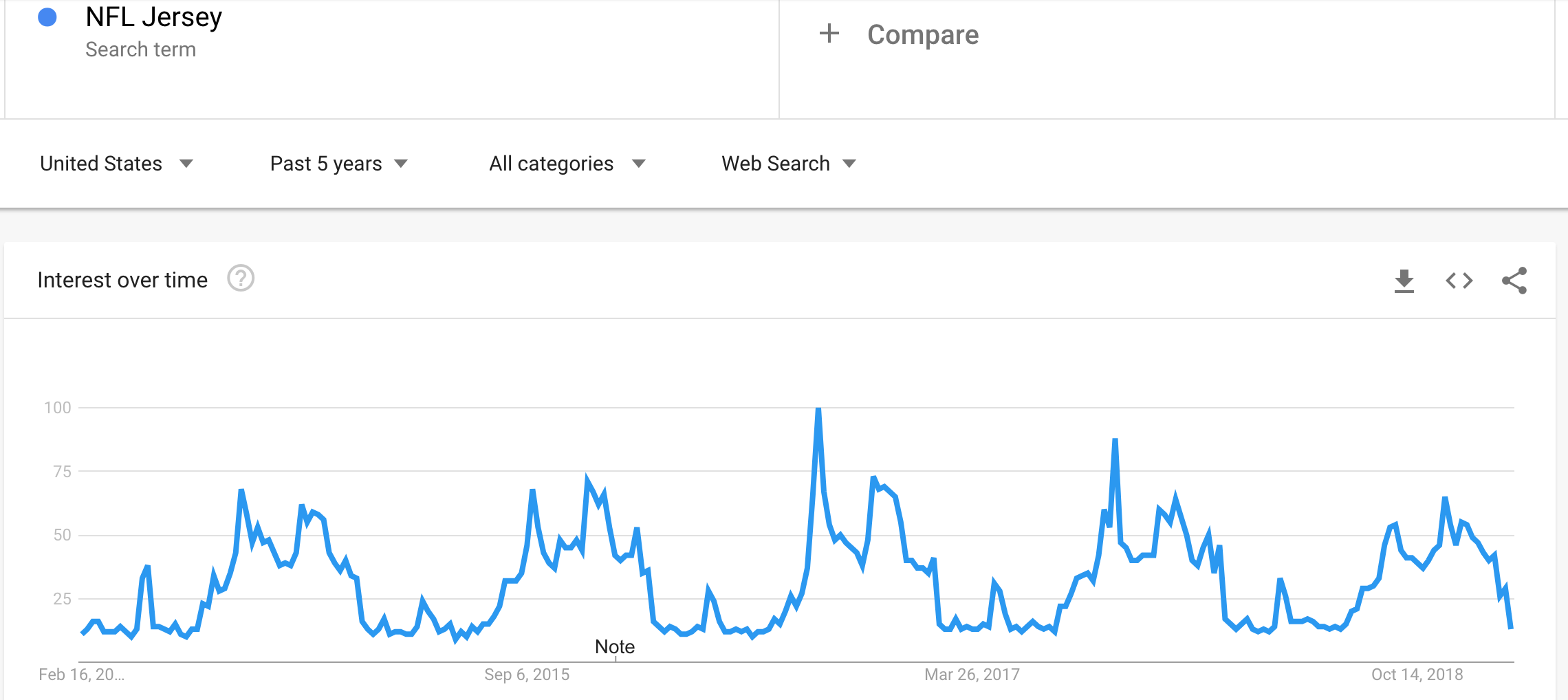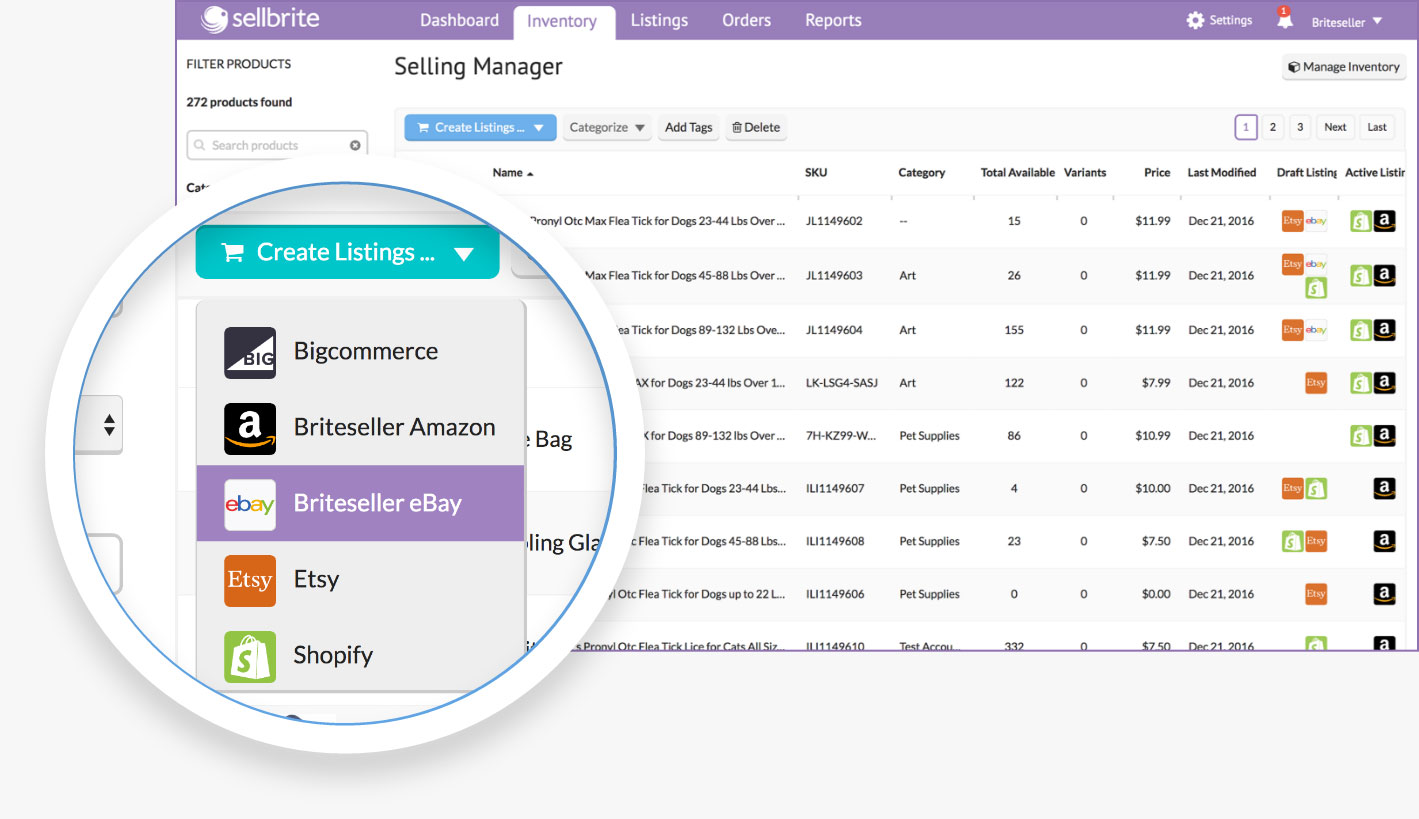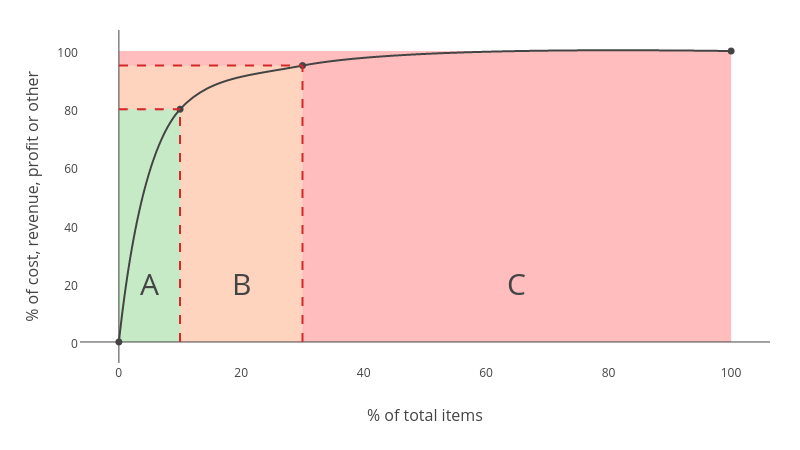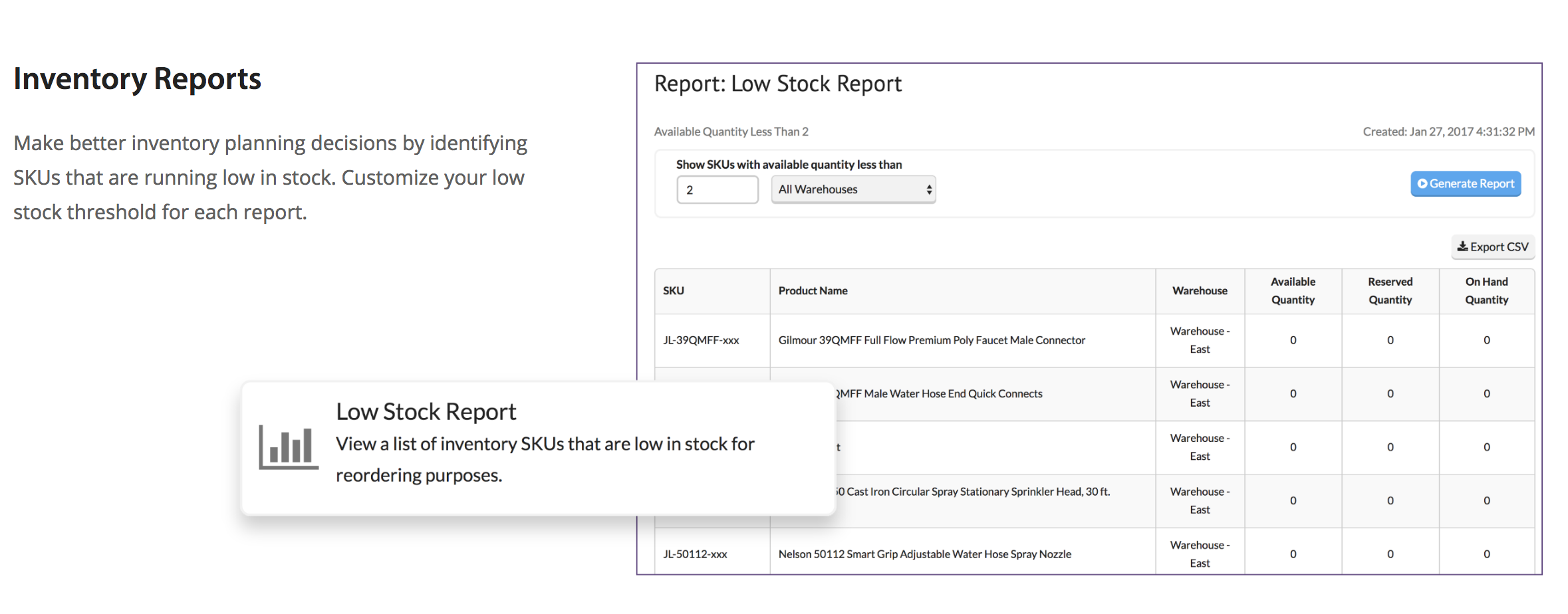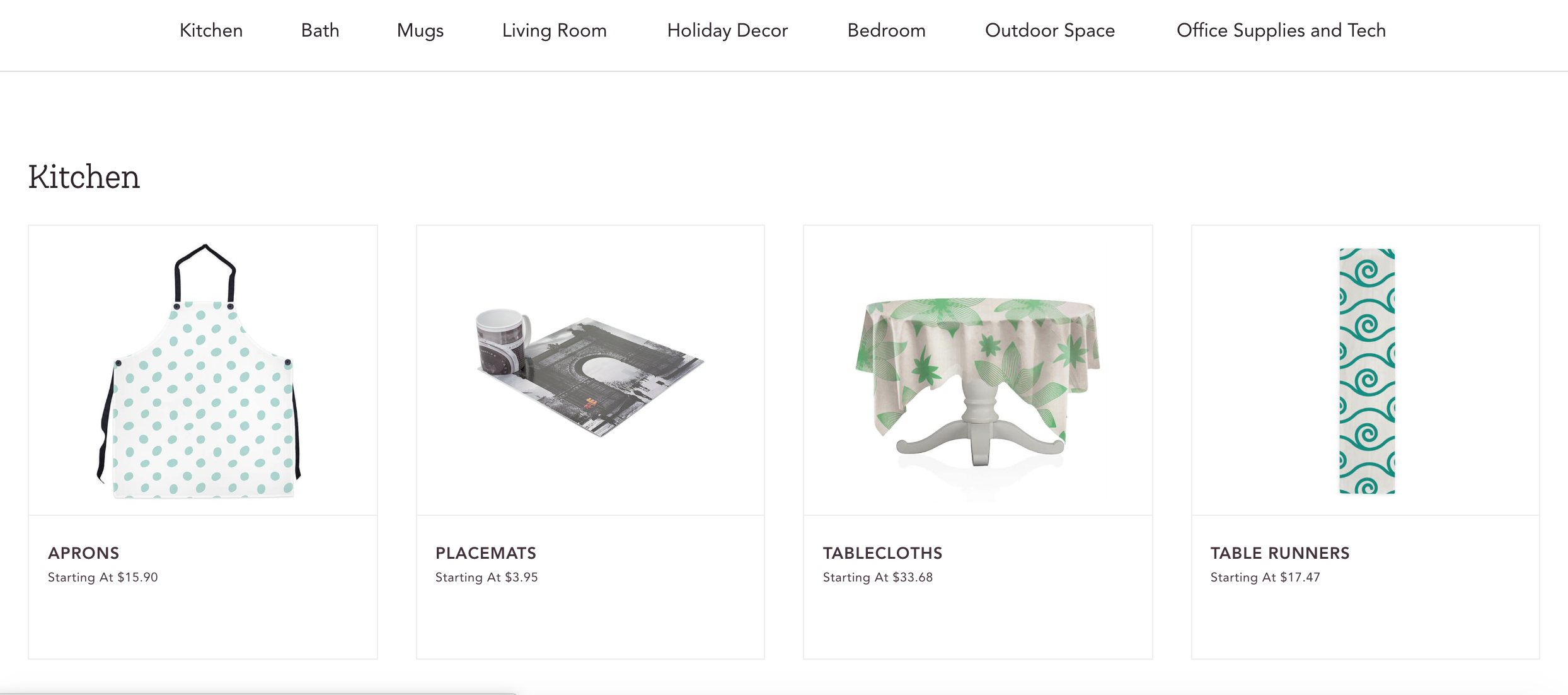Inventory management isn’t just another form of record keeping. As an online seller, inventory management makes or breaks your bottom line.
Solid inventory management is the key to a healthy ecommerce cash flow. With good inventory management, sellers clearly understand how much stock they need to order to make a profit. Without that clarity, sellers risk lowering their profits by accidentally under- or overstocking.
To help merchants gain solid control over their inventory, we’ll highlight 10 critical inventory management techniques. With these practices in place, you can optimize your inventory for greater profits instead of letting it tie up your cash flow.
Why Inventory Management Matters
Most sellers still don’t realize the importance of inventory management. According to research, 43% of small business owners either don’t track their inventory, or they still rely on nonautomated processes such as Excel spreadsheets or pen and paper—both of which waste time and create more room for human error.
The truth of the matter is, when it comes to your bottom line, inventory management is too consequential to ignore. CNBC reported that out-of-stocks, overstocks, and returns cost retailers $1.75 trillion per year.
How does that number get so high? Let’s look at some reasons why overstocking and understocking result in loss of profits.
Overstocking costs you money
When you buy more inventory than you can sell, you lower your profits. You’re spending money on stock that you won’t earn back from selling.
Here are a few ways overstocking can become costly and cut your profits:
- Your excess inventory becomes “dead.” You can’t sell items because they’re out of season, out of style, or irrelevant. An example might include a holiday gift set.
- Your excess inventory spoils. You can’t sell items because they have expired. Examples of goods that can spoil include makeup and food.
- Your excess inventory leads to greater storage costs. Your excess inventory just sits instead of selling, so you have to pay more in storage fees without any revenue.
While overstocking ensures that you always have enough inventory to service your client’s demands, it ultimately leads to profit loss because you loose money on any inventory that goes unsold.
Understocking costs you money
When you don’t buy enough inventory, however, you also lose money and reduce your earning potential.
Here are a few ways understocking prevents you from reaching your maximum earnings:
- You can’t complete the maximum number of orders based on demand. You never achieve potential profit levels because you don’t have enough stock to fulfill the maximum number of sales.
- You lose customers with poor support. Buyers get peeved when items are out of stock. If you can’t fulfill their order, you aren’t just missing that particular order—you may lose future sales with them if they become discouraged.
- Rapid stockouts lead to oversell situations. When you understock across your inventory, the likelihood that you’ll run out of stock while simultaneously selling your last items on multiple channels increases. Overselling can jeopardize your selling privileges on the major marketplaces.
Without enough inventory to meet demand, you miss out on potential earnings and lose your customers to competitors. Some research even suggests that up to 24% of Amazon’s retail sales are from customers who were unable to find the product they were looking for in a store or on another website because it was out of stock.
10 Inventory Management Techniques for Maximum Earnings
While poor inventory management ties up your cash and hurts your profits, great inventory management can save your business a ton of money and increase profits.
Having a well-thought-out and well-documented inventory management process allows you to find the right middle ground between overstocking and understocking so that you can maximize your earnings.
Optimal inventory management varies for every company, but there are a few general strategies that any business can use to avoid human error in inventory management. We’ll highlight 10 essential tips for great inventory management so that you know exactly how much inventory to stock.
1. Track sales to forecast demand.
To a large extent, great inventory management boils down to accurate demand forecasting: If you can predict how many sales you expect to make, you have the knowledge you need to order the right amount of inventory.
To predict sales and demand, there are a few key factors you need to track:
- Historical sales: Identify ordering patterns at different times of the year to determine how much stock you need to buy to fulfill future orders. Pay close attention to seasonal changes in sales—those shifts can be drastic (see tip 9).
- Planned promotions and marketing campaigns: Predict the impact your promotions and planned marketing campaigns will have on sales, and then adjust your inventory accordingly.
- The overall economy: Based on the current state of the economy, predict how demand will increase or decrease for your sector and individual products.
With this information tracked, you’re able to accurately forecast demand. Based on these sales, you can order enough inventory to avoid losing sales and make sure you have enough cash on hand.
2. Track your product category demand.
Tracking sales is just one way to forecast demand and get ahold of your inventory management. You can also track search trends to assess demand for your overall product category. By monitoring your buyers’ search habits, you can determine whether general interest in your products is increasing or decreasing and then adjust your inventory accordingly.
The tool Google Trends can be used to track that interest. It allows you to see how demand and interest in search terms have changed over periods of time. The example below shows that over the past five years, searches for NFL jerseys spike during the beginning and middle of the NFL season and then drop in the spring and summer.
By understanding trends in product-related search terms, you can determine when you’ll need to order more or less of your inventory.
3. Centralize your inventory management.
If you’re selling on multiple channels—Amazon, eBay, Etsy, Walmart, Shopify—inventory management can get messy. You risk making an error and overselling if you’re tracking your inventory separately for each channel. The more your stock grows, the more room there is for human error in your inventory management.
You need to manage your inventory in one centralized place. By monitoring your stock from a single point, you can quickly determine when you need to replenish your inventory to fulfill orders across all channels.
The simplest way to centralize your inventory is to use a multichannel management software, like ours. With an Excel-like bulk editor, our platform lets you easily manage stock levels across all of your warehouses and channels. Then, your inventory is adjusted automatically within minutes of every sale so that you don’t accidentally oversell.
[Source]
By centralizing your inventory, our platform allows you to make changes to your stock with just a few clicks, no matter how large or spread out it is.
4. Schedule inventory auditing.
Even with great, systematized inventory management that reduces human error, manually checking your inventory is still a necessary practice. Relying on reports and software is wonderful for monitoring your stock on a day-to-day basis, but you also want to physically check your stock to make sure your inventory matches up with your current records.
[Source]
There are a few key inventory management techniques to audit your inventory:
- Full, yearly check: Annually, businesses will do an audit of their entire inventory, where they count all of their stock at once.
- Cycle counting: Rather than checking all inventory at once, companies will reconcile the inventory of different products throughout the year.
- Spot checking: To complement scheduled inventory checks, spot checking is when companies pick a specific product, count it, and compare the amount to what it’s supposed to be according to your records. Spot checking is particularly useful for products that sell quickly.
By physically checking and counting your inventory regularly, you ensure that your reporting is accurate and won’t lead to overstocking or understocking.
5. Use ABC analysis.
Some products require more attention than others. Using ABC analysis lets you prioritize the most important items in your inventory management and delegate the appropriate amount of time to monitoring each:
- A: High-value products that represent a small portion of the total inventory
- B: Moderate-value products that represent a decent portion of the total inventory
- C: Low-value products that represent the majority of the total inventory
[Source]
For example, it would make sense to prioritize spot checks for A-level items over spot checks for C-level items, because overselling or understocking an A-level item would have a larger financial impact. A-level items make up a large part of your revenue and a mistake in inventory for those items would be more costly than for a mistake in the C-level items.
6. Set par levels.
A par level is the minimum number of goods that you need to have on hand based on how frequently your product sells and how long it takes to restock. When set correctly, your par levels help keep you organized so you are never understocked. Here are a few tips to keep your par levels accurate and your stock at the right level:
- Assess your past sales patterns. Look at your sales over the past year as a baseline for determining where to set your par levels.
- Consistently check on par levels at different times of the year. The market and your industry can change at different points, so regularly reevaluate your par levels to decide whether you need to increase or decrease them to keep your inventory sufficient.
- Don’t wait to reorder. When your inventory hits the par level or goes below it, that’s the signal to reorder. Waiting any longer will cause your inventory to dip to a significantly low, unhealthy amount.
Following these practices will enable you to regularly set correct par levels that keep your inventory at a healthy amount.
7. Set up reorder alerts.
Establishing a par level for each product is just the first step. As a busy seller, you need a system for becoming aware of when your inventory reaches those levels so you know when to replenish your stock.
Set up reorder alerts to make sure that you don’t forget to replenish your stock. Create a daily reminder to check whether your stock has reached par levels and needs to be reordered.
Many inventory management software options are also built to track when your stock reaches low levels. Our platform offers a low-stock-report for every user to show which items need to be replenished. Sellers can create unique low thresholds for every product to reflect each par level.
[Source]
This low-stock reporting removes any worries about missing a low-stock product through manual checking and accidental overselling.
8. Try JIT (Just in Time) stocking.
To avoid the costs of overstocking, many sellers use “just in time,” or JIT, stocking. With this strategy, you order only what you need to meet immediate demand.
Using JIT stocking as your primary inventory management technique has the potential to save your business a lot of money, but it comes with risk as well. Here are the main pros and cons of the strategy:
- Pro: You save money. Because you aren’t building up much inventory with a JIT approach, you save money on storage and also minimize your risk of losing a lot of money if demand for your product dips. With this extra cash on hand, you can then reinvest it in other parts of your business, such as advertising, which would in turn help your sales.
- Con: Distribution could easily be disrupted. The success of this approach hinges on steady and predictable raw-materials suppliers. If something goes wrong with one of your suppliers (e.g., they unexpectedly increased their prices or had a natural shortage), you won’t be able to fill the customers’ order in time because you lack back-up inventory. This can also make large surges in demand difficult to handle. If, for example, your product sales spike every holiday season, you might not be able to keep up with the demand on a JIT approach. You could stock up on raw materials and inventory but then be back at square one and run the risk of overstocking.
Some companies, like Toyota and Dell, have perfected this inventory management technique, but when first starting out, it is best to be cautious. Slowly incorporate the method into your inventory control in case any supplier issues occur, and recheck your demand forecasting to ensure that your small inventory is sufficient.
9. Prepare for seasonality.
For many sellers, different seasons can cause massive changes in demand that require inventory prep. You want to avoid understocking at this time because potential profits during different seasons can be so high. On the other hand, you don’t want to order too much to prepare and then lose money in overstocking.
Predicting how much you’ll need to order requires tracking past sales, just like forecasting normal demand (see tip 1). Once you’ve determined how much you’ll need to order, there are a few extra steps to prepare for seasonality since the supply changes can be so drastic:
- Notify your raw-materials suppliers of seasonal demand changes. Reminding them multiple times about your increased seasonal supply needs ensures that they’ll be able to fulfill your orders without any last-minute surprises.
- Plan how many reorders you’ll need during the season. Schedule points during your busiest seasons, where you plan to reorder goods early enough to avoid running out of inventory.
- Evaluate your postseason finances. Anticipate how much demand will drop in off-peak seasons to decide whether you’ll need loans or other financial assistance to sustain your store.
By prepping for seasonality in your inventory management, you avoid cutting profits through understocking and overstocking when demand suddenly shifts.
10. Consider dropshipping.
If handling and storing your own inventory is too expensive for your current needs, dropshipping may be your ideal inventory management technique. Rather than holding and shipping products yourself, dropshipping puts those responsibilities in the hands of the supplier. By eliminating storage and fulfillment costs, dropshipping can help you save money.
At the same time, dropshipping can also become expensive if you’re not careful. Individual items are more expensive when purchased through dropshipping than they would be if they were bought in bulk.
To avoid losing money, make sure that the cost of goods from a dropshipping supplier doesn’t cut your profits. Gooten, for example, is a dropshipping supplier that offers competitive prices on its products.
By choosing a dropshipping partner carefully, you can save money and time by letting a supplier handle fulfillment and storage for you.
A Quick Review
Can’t remember all of the steps? Here are the 10 inventory management techniques in this guide to help you control costs.
- Track sales to forecast demand.
- Track your product category demand.
- Centralize your inventory management.
- Schedule inventory auditing.
- Use ABC analysis.
- Set par levels.
- Set up reorder alerts.
- Try JIT (just in time) stocking.
- Prepare for seasonality.
- Consider dropshipping.
Better Inventory Management Techniques, Better Profits
Tracking your supply affects your cash flow just as much as a sales pitch. With a clear understanding of your inventory, you have control over your profits. You know how much you need to have in stock in order to fulfill every order and earn maximum revenue without losing money through excess inventory.
The 10 techniques in this guide are fundamental strategies for practicing great inventory management. From this foundation, adapt your practices to your company’s unique needs. Inventory management is customizable to any business, so test and iterate different methods to see which processes are most effective in accurately tracking and saving you money.

